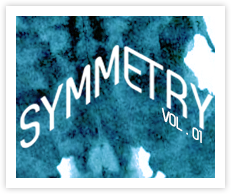

Say no to two-way symmetrical communication
Melanie Brister // March 15, 2013

Symmetry’s essence lies in its ability to allow parties to interact freely, creatively, and interchangeably. Symmetry means that power is paralleled: there is no mighty ruler, but rather all rest on common ground.
Digital technologies generate connectivity, allowing for an effortless exchange of information back and forth. It is argued that organizations can participate in two-way symmetrical communications through the use of said technologies.
But what happens when such symbiotic communications processes are obstructed by the control of an external entity? What happens when a corporation or organization monitor a Facebook page or the company blog? Even if the corporation allows for the comments and postings from individuals, it controls the platform itself, allowing for dominance and power.
Driven by capitalist theory, the corporation knows and understands its success is dependent on its cumulative wealth. It understands that fundamentally, freedom of speech cannot be effectively employed due to its selective agenda on increasing capital. Such capitalistic values conflict with some of our existing values, including freedom and democracy.
But why does this matter? Two-way symmetry may be an ideal, but you may think that in the least it is something that we should strive for. After all, if we even come close to obtaining symmetry, then our job is ethically complete. For a public relations practitioner, this concept plays an important role when it comes to making sense and meaning of the industry that we participate in. If we think we can achieve this ideal in common public relations tasks then our perception of our practice is skewed. With this ideal comes a misinterpretation of what symmetry and transparency mean in and of themselves.
Does this render an ideal such as two-way symmetrical communications useless? Well, ultimately it depends on what actions are being taken toward achieving the ideal. Do we act with reverence towards it and aspire to achieve it? Or is it too divorced from the practice that the fieldwork and its guiding principles have lost touch? Democracy is an example of an ideal that will never be realized but we nevertheless still see it as a good thing that we are attempting to obtain. Our nation partakes in acts and practices that work to achieve this ideal every day. With respect to two-way symmetry, it can be argued that in practice our acts appear too far removed from the theory. This is due to the inability to align our existing values with the values, objectives and expectations of the corporation. Due to its inability to truly speak to public relations practitioners’ action, it appears to be an inert ideal that has lost its potency.
Symmetry must allow for the freedom to produce, to participate, and to interact so that the individual is in no way constrained. The work we engage in each day plays a role in our ever-changing culture. Indeed, communications plays a huge part in contributing to meaning-making, and in part to contributing to the development of the self. It is the exchanges of creativity, expression, and production that help us to make sense of the world around us. And if we cannot achieve this free symmetrical exchange then we need to come to terms with this idealism being an inadequate representation of the wide-scope of our work.
So, where from here? If we cannot achieve the ideal, nor see its relevant purpose in day-to-day communications practice, then what should direct a public relations practitioner? Realistically, a public relations practitioner should not be guided by one ‘excellence’ model. In practice, we observe many successful examples that could be deemed as excellent but fall short of achieving two-way symmetry.
In letting go of the near impossibility of the model, public relations practitioners should attempt to assess each public relations activity and tasks separately, and weigh organizational values, publics’ values, and ethics in their entirety. Although this presents a more relative approach to structuring tasks and goals, it presents the possibility for adaptability and ultimately, realism.
